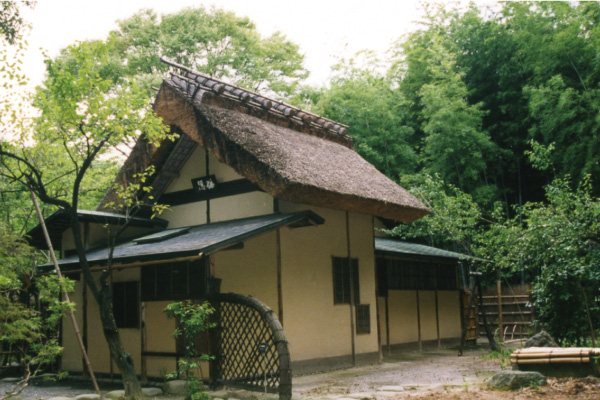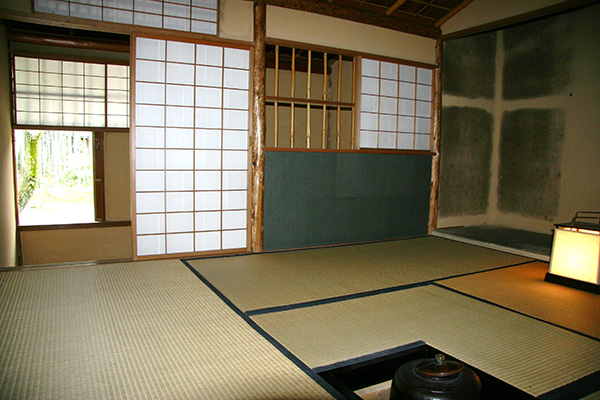Baiin Tea House
- Baiin Tea House
- Inner Tea House
The name of the Baiin tea house invokes plum trees, which are considered an
auspicious symbol because they bloom before other plants, heralding the coming of spring. Baiin
contains a re-creation of a small historic tea room in the style favored by Sen no Sotan (1578–1658),
the third-generation head of the Sen family of tea masters. Sotan was the grandson of Sen no Rikyu
(1522–1591), a famous tea master known for his profound influence on the development of the Japanese
culture of tea (chanoyu).
Usually guests enter a tea house directly from the outside, but visitors to Baiin
first walk through a covered passageway enclosed by earthen walls and lined with stepping stones. The
compact four-and-a-half-tatami-mat tea room just inside was constructed based on building plans of Sen
no Sotan’s original. There is a larger tea room in the rear and a preparation space between the two.
The thatched roof, earthen walls, and tokonoma alcove pillar made from roughly hewn chestnut create an
impression of simple, natural beauty, reflecting the wabi-sabi aesthetics prized by
practitioners of chanoyu.
Near the tea house is a suikinkutsu, a traditional musical garden feature. An
upturned pot with an opening in the bottom is buried in front of the stone water basin. When water
from the basin drips into the pot, it creates soft, musical splashes, often compared to a bell or a
koto zither. Visitors can listen to the sounds through the bamboo tube inserted into the ground
beside the water basin.



